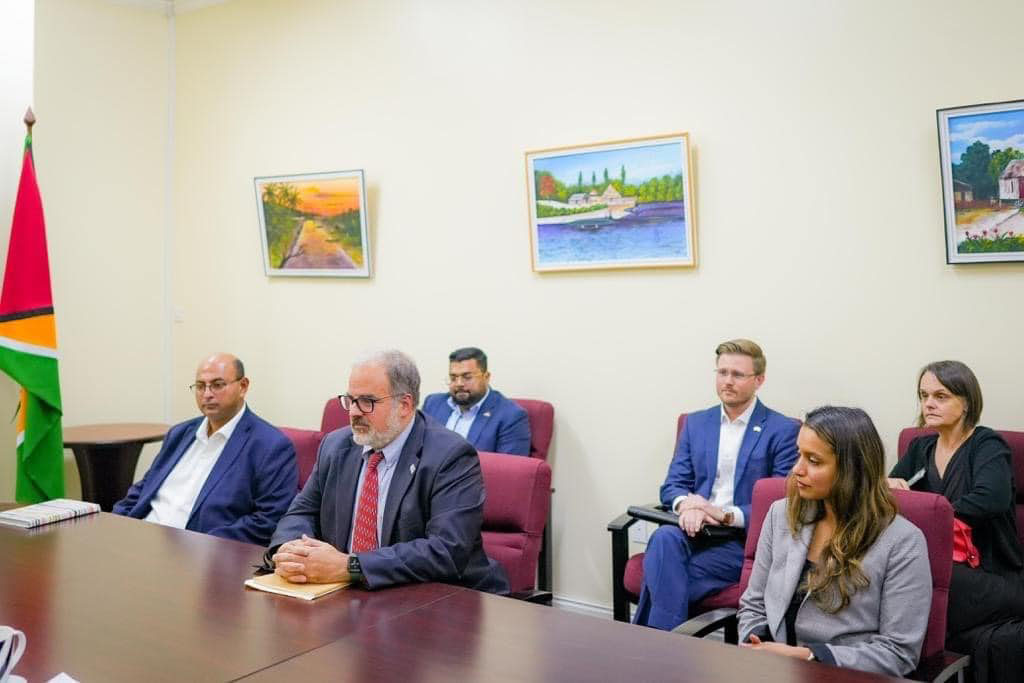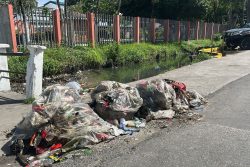Armed with assurances by US agency heads that they are in support of the US$660 million loan application to finance the Wales gas-to-energy project, Guyana is optimistic that the sums will soon be approved.
“Every US agency, including on a bipartisan basis, members from both sides of Congress assured us that this project is a great project; it will receive their full support, so it is just that you have to go through the technical process,” Vice President Bharrat Jagdeo yesterday said when asked by Stabroek News about the loan’s approval. He was quick to make clear that a timeframe could not be given for the release of the funds as the process requires all the necessary technical and other approvals before the sums are handed over.
The gas to energy project appears to be severely delayed as the government has said that it could be in place by the end of 2024 and significantly cutting energy costs. That timeline appears unattainable at this point.
The Vice President, whose portfolio includes oversight of the energy and finance sectors, explained that the process would see consultants of the US EXIMBANK completing their assessments and analyses by the end of next month, which includes on-site inspections. After that process another phase would be US congressional approval and the final approval by US EXIMBANK’s board.
Senior Minister in the Office of the President with responsibility for Finance, Dr Ashni Singh, on Friday last met with the Senior Vice President of the Export-Import (EXIM) Bank of the United States, David Sena, who had come here on a visit.
A release from the Ministry of Finance had disclosed that the meeting facilitated discussions surrounding the Bank’s support of Guyana’s Gas-to-Energy project. When completed, this project is expected to significantly reduce electricity costs, increase the competitiveness of other industries, and reduce the nation’s reliance on heavy fossil fuels.
In July 2022, the Government of Guyana and the EXIMBANK of the United States signed a historic US$2 billion Memorandum of Under-standing (MOU), with specific focus on infrastructure, energy, water and sanitation, information and communications technology, and agriculture.
Then in April of this year, Guyana made the US$660 million loan application.
In August, during an exit interview, former US Ambassador to Guyana, Sarah-Ann Lynch noted that deals made through the partnership created by Guyana with the US EXIMBANK are expected to be approved once US regulatory and other processes are completed,
She had been asked about deals arising out of the signing and responded that deals were already in the pipeline and some were mega ones.
“There are deals in the works. They take some time because some of them are quite large,” the ambassador announced.
She too, explained that the approval process for loans from the US institution goes through a rigid review.
“So, as you can imagine, the Export-Import bank is a US government institution and we have to exercise certain due diligence and there are lots of rules to follow, to do certain analyses that need to be done before a deal is completed. Whether it be environmental, or gender… impact analysis needs to be completed, and then depending upon the size of the award, it may have to go for congressional notification.”
While making it clear that she did not want to get into details as it relates to money thresholds and approvals since she does not work for the bank, she reasoned that if there are smaller amounts, they may not have to go through the tiers of processing as larger ones.
“If it’s under a certain dollar amount, the board of export-import bank can approve it but if it’s a very large deal it has to go for congressional notification.”
Nonetheless, the US envoy was confident that most of the deals brokered will be given approval.
“I expect that most, if not all, of these deals would be successful.”
Meanwhile, Jagdeo echoed Lynch’s optimism and remarked that it was only a matter of time before the approval.
Following successful negotiations that have resulted in a reduced cost, government entered into an agreement for a US$759 million contract for US bidders, CH4/Lindsayca, to build the 300MW Combined Cycle Power Plant and a Natural Gas Liquids (NGL) Plant at Wales, West Bank Demerara. Questions have been raised about the relevant experience of this company in delivering this major project.
The Vice President noted that government has already sunk US$100 million into the project and sought to secure the rest through a loan from US EXIMBANK.
The government had also made alternative arrangements in the event the loan was not approved, Jagdeo added.
Pleaded
On June 30 last year, President Ali pleaded with Guyana’s citizenry to trust his government to give them a gas-to-shore project that will bring not only lower power costs but put savings into their pockets while expanding development and prosperity for the nation.
“There is absolutely nothing to hide in this process or project. It is above board, it is transparent, it is open. It has undergone every single test of scrutiny. But the time has come for us to move forward… in bringing the desired benefits to the people of this country,” the President said at a forum held at State House to give an overview of the project.
And as he announced that no cost has yet been put to the project estimated by analysts to be over US$1.3 billion, the President said that by the end of 2022 that sum would be known.
“I hear people talking about different figures; US$500 million, US$700 million, US$1 billion. We operate and we are going on with this project in a very open and transparent way. It is a public bid. It is a public bid! Companies put in their figures… it is not someone sitting in an office saying ‘this is the project cost’. It is a process that is arriving at a cost based on an open and transparent (process). So whether it comes in at (US)$700 million or US$1 billion, that is what the process would decide. Not influenced by anyone. We would like for it to come in as less as possible but we have to go with what the process delivers.”
In his address, Ali said that he wanted to make the ordinary citizen aware of what the project entails and what it would mean to them, as there has been much criticism from sections of society.
So confident is his government that this project will serve as a catalyst for Guyana’s economic sector growth and help in the fight for poverty alleviation that Ali said that it would not abandon it and would press on to make it reality .
“Let me be very clear, we are not going to abandon this project. If we have to go out [to tender] again and again, we will go, because we know that the studies and everything, including the independent review by Norway has pointed to this project as being good for Guyana, good for the environment and bringing prosperity. So this project will get underway,” he contended.
On the financial side, Ali acknowledged that negotiating was difficult as “negotiating power with Exxon is like negotiating with a super power state.” Nonetheless, he said that Guyana’s negotiating team’s capabilities should not be doubted as in this phase of bringing gas from the Liza project, Guyana gets the gas free.
“Of the US4.5 cents per KWH that will be paid, he said it “includes paying back for the pipeline, the LGN, facility and the operational costs.”
“The gas comes to the people free of cost!” Ali declared.
The project will be executed in three phases – construction, operation and decommissioning. It entails three aspects as well. The first is an offshore pipeline which is approximately 220 kilometres of a subsea pipeline extending from new subsea tie-ins at the Destiny and Unity FPSOs in the Stabroek Block, to the proposed shore landing located approximately 3.5 kilometres west of the mouth of the Demerara River. The second is the onshore pipeline that is a continuation of the offshore line and extends about 25 kilometres from the landing site to the NGL plant. The third is the NGL plant and associated infrastructure that will be located about 23 kilometres upstream from the mouth of the Demerara River on the west bank.










